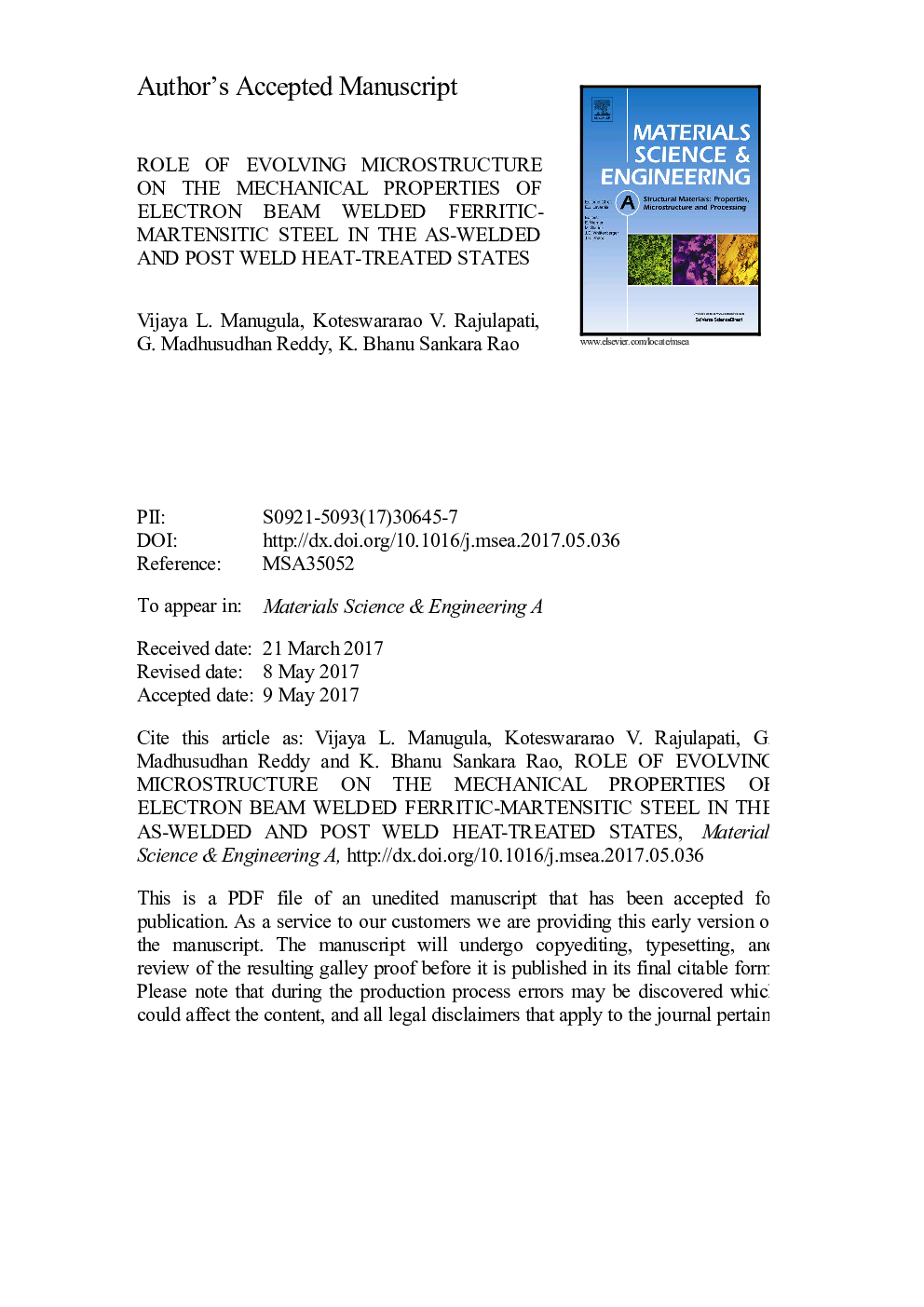| کد مقاله | کد نشریه | سال انتشار | مقاله انگلیسی | نسخه تمام متن |
|---|---|---|---|---|
| 5455653 | 1514645 | 2017 | 25 صفحه PDF | دانلود رایگان |
عنوان انگلیسی مقاله ISI
Role of evolving microstructure on the mechanical properties of electron beam welded ferritic-martensitic steel in the as-welded and post weld heat-treated states
ترجمه فارسی عنوان
نقش مکانیزم در حال تحول در خواص مکانیکی فولاد ملی فولاد فریتیک مارتنزیتی جوش داده شده در جوشکاری جوش داده شده و پس از جوشکاری
دانلود مقاله + سفارش ترجمه
دانلود مقاله ISI انگلیسی
رایگان برای ایرانیان
کلمات کلیدی
موضوعات مرتبط
مهندسی و علوم پایه
مهندسی مواد
دانش مواد (عمومی)
چکیده انگلیسی
The microstructure and mechanical properties of electron beam welded joints of reduced activation ferritic-martensitic steel in the as-welded and post-weld heat treatment (PWHT) states have been explored. The as-received base metal (BM) was in normalised and tempered condition. The PWHTs employed include post-weld direct tempering (PWDT) at 760 °C/90 min/air cooling and (ii) re-austenitizing at 980 °C/30 min/air cooling+ tempering at 760 °C/90 min/air cooling (PWNT). The BM microstructure was composed of fully tempered lath martensite with prior austenite grain and martensite lath boundaries decorated with M23C6 type carbides whereas intra-lath regions majorly displayed MX type carbides. In the as-welded state, the fusion zone (FZ) contained martensite in coarse grains and small amount of δ-ferrite with no evidence for precipitation of M23C6 and MX either in intra- or inter-granular regions. The heat affected zone (HAZ) was made up of martensite in fine grains without any δ-ferrite and with subtle variations in microstructure across the HAZ. The as-welded joints exhibited high hardness in the FZ and HAZ due to the occurrence of martensite during the weld thermal cycle. The impact toughness of the as-welded joint was inferior compared to that of the BM due to the combined influence of the martensite, coarse grains and presence of δ-ferrite in the weld zone. Tensile strength of as-welded joint was higher than that of BM. PWHTs were beneficial in decreasing the hardness in the FZ and HAZ. PWDT could not fully eliminate the pronounced variation of hardness observed in the transverse section of welded joint. Though the impact toughness of the weld joint was improved marginally compared to as-welded state after PWDT, it was much lower than that recorded in the case of BM. PWNT treatment minimised the variation in hardness across the transverse section of weld joint and the impact toughness surpassed than that achieved in BM. The tensile properties of BM, welded joints in as-welded and in PWHT conditions were determined at room temperature and correlated with the prevailing microstructures.
ناشر
Database: Elsevier - ScienceDirect (ساینس دایرکت)
Journal: Materials Science and Engineering: A - Volume 698, 20 June 2017, Pages 36-45
Journal: Materials Science and Engineering: A - Volume 698, 20 June 2017, Pages 36-45
نویسندگان
Vijaya L. Manugula, Koteswararao V. Rajulapati, G. Madhusudhan Reddy, K. Bhanu Sankara Rao,
